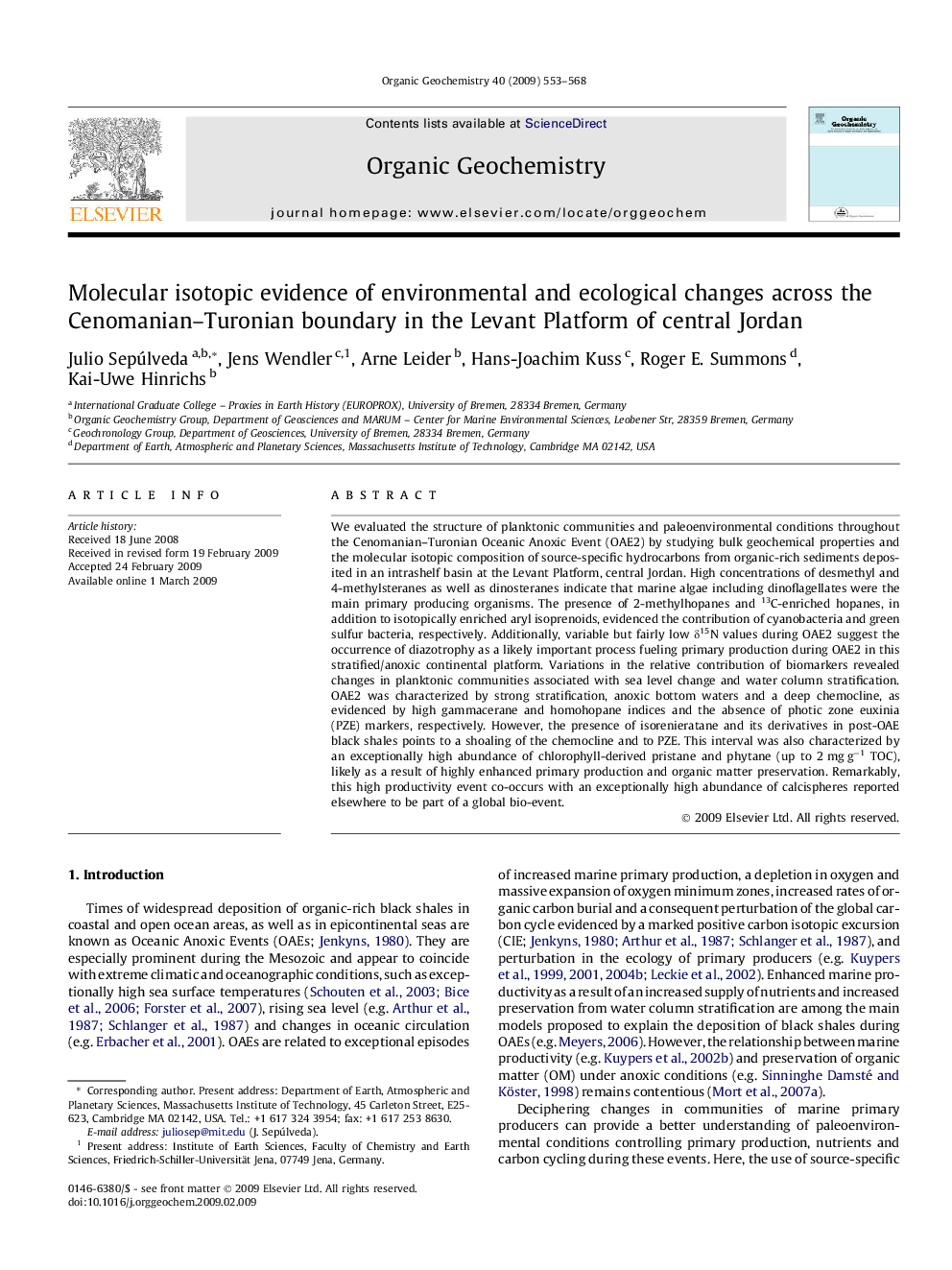| کد مقاله | کد نشریه | سال انتشار | مقاله انگلیسی | نسخه تمام متن |
|---|---|---|---|---|
| 5163641 | 1379921 | 2009 | 16 صفحه PDF | دانلود رایگان |
عنوان انگلیسی مقاله ISI
Molecular isotopic evidence of environmental and ecological changes across the Cenomanian-Turonian boundary in the Levant Platform of central Jordan
دانلود مقاله + سفارش ترجمه
دانلود مقاله ISI انگلیسی
رایگان برای ایرانیان
موضوعات مرتبط
مهندسی و علوم پایه
شیمی
شیمی آلی
پیش نمایش صفحه اول مقاله

چکیده انگلیسی
We evaluated the structure of planktonic communities and paleoenvironmental conditions throughout the Cenomanian-Turonian Oceanic Anoxic Event (OAE2) by studying bulk geochemical properties and the molecular isotopic composition of source-specific hydrocarbons from organic-rich sediments deposited in an intrashelf basin at the Levant Platform, central Jordan. High concentrations of desmethyl and 4-methylsteranes as well as dinosteranes indicate that marine algae including dinoflagellates were the main primary producing organisms. The presence of 2-methylhopanes and 13C-enriched hopanes, in addition to isotopically enriched aryl isoprenoids, evidenced the contribution of cyanobacteria and green sulfur bacteria, respectively. Additionally, variable but fairly low δ15N values during OAE2 suggest the occurrence of diazotrophy as a likely important process fueling primary production during OAE2 in this stratified/anoxic continental platform. Variations in the relative contribution of biomarkers revealed changes in planktonic communities associated with sea level change and water column stratification. OAE2 was characterized by strong stratification, anoxic bottom waters and a deep chemocline, as evidenced by high gammacerane and homohopane indices and the absence of photic zone euxinia (PZE) markers, respectively. However, the presence of isorenieratane and its derivatives in post-OAE black shales points to a shoaling of the chemocline and to PZE. This interval was also characterized by an exceptionally high abundance of chlorophyll-derived pristane and phytane (up to 2 mg gâ1 TOC), likely as a result of highly enhanced primary production and organic matter preservation. Remarkably, this high productivity event co-occurs with an exceptionally high abundance of calcispheres reported elsewhere to be part of a global bio-event.
ناشر
Database: Elsevier - ScienceDirect (ساینس دایرکت)
Journal: Organic Geochemistry - Volume 40, Issue 5, May 2009, Pages 553-568
Journal: Organic Geochemistry - Volume 40, Issue 5, May 2009, Pages 553-568
نویسندگان
Julio Sepúlveda, Jens Wendler, Arne Leider, Hans-Joachim Kuss, Roger E. Summons, Kai-Uwe Hinrichs,